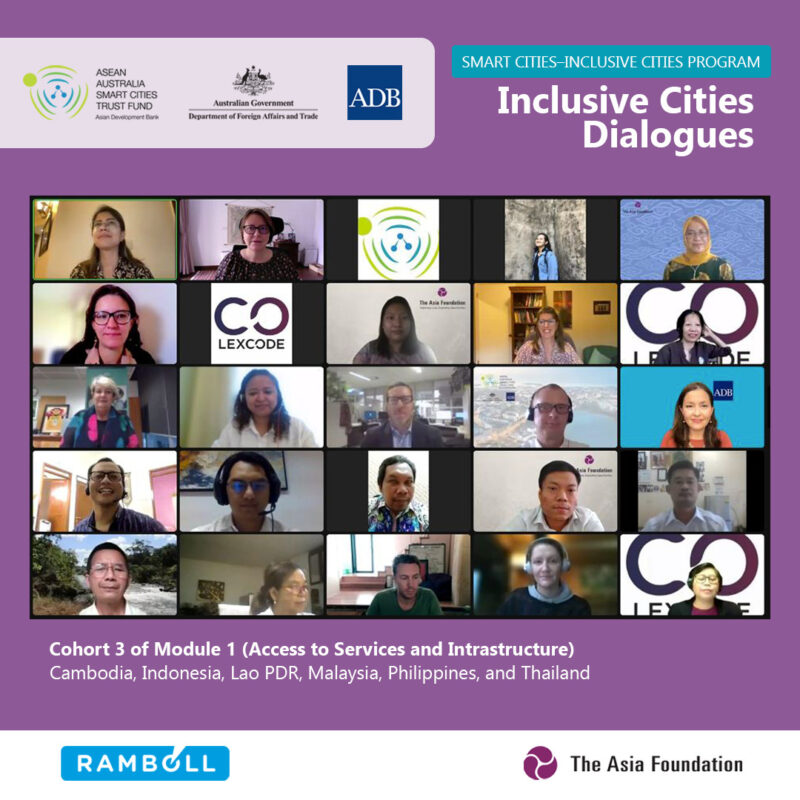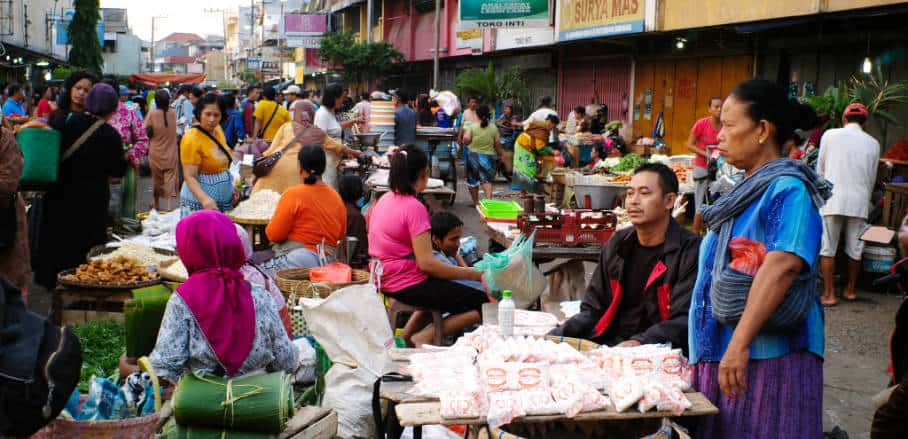Ingredients for Inclusive and Effective Urban Reform
Sumaya Saluja from The Asia Foundation on inclusion, equality and participatory governance for liveable cities.
If liveable cities are understood as places where people and communities want to live and thrive, it is hard to deny the importance of inclusion and equity in how cities are experienced and the opportunities they afford to their residents. Many cities offer the potential for social and economic advancement. However, the possibility of availing of these gains is contingent on one’s gender, class, ethnicity, and disability, among other factors. For example, migrant workers, women, people living with disabilities, and residents of informal settlements, are often excluded from data collection, decision-making and government policy and programme design.
At the same time, the scale and speed of urbanisation in Asia pose an immense challenge – in South East Asia estimates expect another 100 million people in addition to the current 294 million to be living in urban areas by 2030 – leaving many city planners and governments unable to keep up with surging demands for housing, infrastructure, education, economic opportunity and health and sanitation among others.
In the face of these challenges, many across government, civil society and the private sector are pursuing initiatives to ensure cities are liveable for all residents, particularly the disadvantaged. When our team at The Asia Foundation was approached to design a regional programme to promote inclusion across cities in ASEAN countries, we wanted to start by learning from these ongoing initiatives. This approach allowed us to examine what factors enabled reform rather than simply presenting solutions that may or not work across different contexts, without reference to actual experience.
To do so, The Foundation, in collaboration with Ramboll, under the ASEAN Australia Smart City Trust Fund, has been curating a series of dialogues with stakeholders from 15 cities across seven ASEAN countries to deepen our collective understanding of why and where inclusion remains a challenge; learn from approaches to address these challenges and what makes them stick; and ultimately encourage a wider set of decision-makers to strengthen inclusive approaches in their cities.
The first set of dialogues, convened between March and April 2022, brought together 129 stakeholders including city administrators and planners, local business associations, academics, civil society organizations, regional bodies, such as the ASEAN secretariat and infrastructure initiatives, to discuss challenges and potential solutions to improving access to infrastructure and services. Across the 11 case studies that were showcased, a few factors stood out as core ingredients to pursuing and sustaining inclusion reform.

Participants attending Inclusive Cities Dialogues on Access to Infrastructure and Services hosted by The Asia Foundation in partnership with Ramboll under the ADB-managed ASEAN Australia Smart Cities Trust Fund © AASCTF
Partnerships Sharpen Response
The availability of representative data is a critical first step in ensuring services are responsive. It is also a common stumbling block as local or city officials are strapped for resources and/or time. Here, governments can collaborate with academic institutions or civil society to fill some of these gaps. For example, in Semarang, Indonesia, the Regional Planning and Development Agency, or Bappeda, closely works with the Institute for the Assessment of Development Resources (LPPSP) to provide data on disadvantaged groups that can inform planning decisions. Mr Slamet Budi Utomo, who heads the division, noted that they now have data across 23 indicators on people living with disabilities. Examples include the kind of employment these groups are engaged in, which gives them keen insight to design more targeted plans and responses. Similarly, Mr Akhra Chorn highlighted the work of Cambodia’s Disability Action Council (DAC), which was set up to bring together representatives from the government, non-governmental organisations, the private sector, and communities of people living with disabilities to make government programmes more accessible and responsive to the needs of the latter.
Collecting Accessibility Gaps in Real-Time
In Cambodia, Mr Rada Chor from Humanity and Inclusion (HI) shared his work in designing a tool that responded to the lack of an existing contextually relevant instrument to assess infrastructure gaps for people living with disabilities in Southeast Asian cities. HI’s Journey Access Tool (JAT) combines access and road safety audit methodologies and was designed in collaboration with people living with disabilities. It also offers a participative approach for collating and communicating accessibility and safety challenges with city planners and administrators. In their efforts to maximise JAT’s impact, HI offered technical support to local administrators to support them respond to emerging data and analysis from the JAT through a combination of policy measures and practical interventions.
Designing Tailored Solutions in Informal Settlements
The team from the Revitalising Informal Settlements and their Environment (RISE) talked about their work in improving sanitation across informal settlements in Makassar, Indonesia. Despite the stark need for improving sanitation in informal settlements, governments often find it hard to expand trunk sewage systems that require significant resources and space to set up and maintain. Instead, the RISE team began by setting up a co-design process where community members were invited to discuss issues related to water and sanitation, and how these contributed to frequent flooding and health consequences. Recognizing that it was impossible to speak to all community members in one place, they placed residents in smaller clusters of seven houses each and discussed the issue with each cluster to ensure no one was left behind. While this process was time- and resource-intensive, it ensured interest and engagement among the community. The RISE team then developed nature-based and fitted solutions to improve waste management. They also established a group of community representatives, Kelompok Pengelola Lingkungan or KePoLink, who were trained on different aspects of the new waste management systems. KePoLink are now an essential component, ensuring that the efforts of the team are sustainable and can expand.
Building Ownership
In Penang, Malaysia, Ong Bee Leng highlighted the work of the Penang Women’s Development Cooperation (PWDC) in integrating gender-based and participatory budgeting. They did so by facilitating a series of focus group discussions with different groups of city residents. By opting for smaller group discussions instead of larger town hall gatherings, they were able to overcome the challenge of only capturing the voices of those who are most vocal, typically men. By curating a series of dialogues, PWDC was able to gather the varied needs and perspectives of men and women and people living with disabilities. This process not only increased the responsiveness of government decisions but also increased community ownership of waste management services in their locality. For instance, the community opted to contract cleaning services among community members instead of outsourcing it to a company. This increased both the quality of service but also provided livelihood opportunities for some.
Overall, these case studies demonstrated that solutions that are driven and owned by communities most impacted are not only more inclusive but more efficient, enduring and smart.
Over the next few months, the Foundation will be curating similar dialogues on the topic of urban safety and decent work. All case studies and other examples will be showcased in a public inclusive cities event scheduled in September 2022.
- Ingredients for Inclusive and Effective Urban Reform - 31. May 2022
